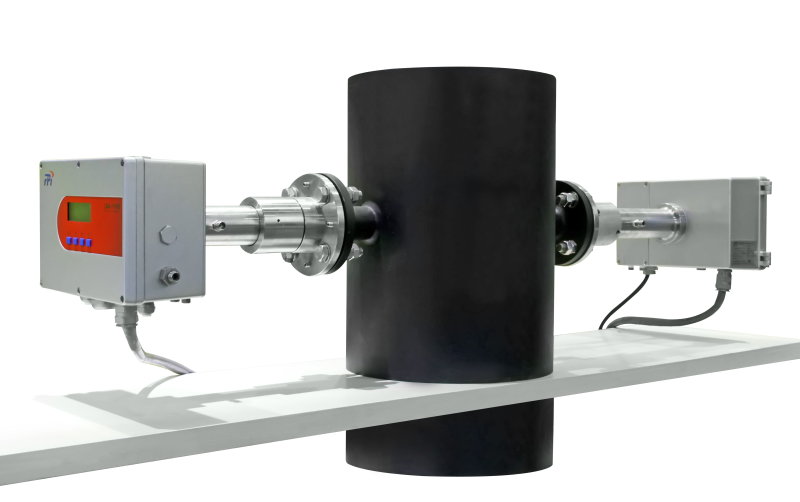In the following article, Craig Day from Quantitech explains how, in just 12 years, two photonics graduates from Universities in California have developed a range of laser based gas analysers and created a global instrumentation business employing over 3,000 people.
The industrial revolution that took place in the 1700s and 1800s in Britain, Europe and the United States took place at a time when monitoring technology did not exist, so process control was extremely basic and environmental emissions were not a consideration. In contrast, China’s recent industrial revolution has benefited from the availability of a wide range of instrumentation technologies including laser gas analysers.
Laser Gas Analysers
Tunable diode laser absorption spectroscopy (TDLAS) is by far the most common laser technique for measuring the concentration of gases and water vapour in gas mixtures. The popularity of this technique is largely down to the very low detection limits that TDLAS can achieve. However, in addition to ultra-low, trace-gas concentrations, it can also be adapted to measure all the way up to high percentage concentrations. As a result of this flexibility, the technology has been employed in a wide variety of applications.
TDLAS is comprised of a transmitter unit and a receiver unit, mounted on opposite sides of a duct or chamber. A laser beam from the transmitter unit passes across the measurement path (process duct for in-situ type, measurement cell for extractive type) where some of the energy is absorbed by the measured gas. This attenuated light is detected by a photoelectric sensor in the receiver unit, and a proportional concentration value is derived using the Beer-Lambert relationship. The laser light source has a very narrow spectral width that can be tuned to correspond to single absorption lines, uniquely belonging to a compound of interest, which means that even in complex gas mixtures, analytes can be resolved without interference from other gas species. Optical window contamination, dust and moisture effects are kept to a minimum by simultaneous scans in the non-absorbing region. Typical analytes include O2, CO, CO2, H2O, H2S, HF, HCl, HCN, NH3, CH4, C2H2 and C2H4.
History
During the 20th Century, the need for industrial efficiency grew in both the United States and Europe. As a consequence, research organisations sought to develop technologies that could provide accurate continuous process monitoring to enable better process control. The measurement of combustion dynamics and kinetics in harsh conditions was a key objective for many major industries.
Initially, researchers adapted existing laboratory based technology but many of these suffered from problems such as interferences from other gases and sampling issues. However, over time, instrumentation evolved and those that were able to withstand process conditions and provide reliable continuous data naturally became the most popular. TDLAS was one of the most successful technologies.
Conveniently for manufacturers of laser gas analysers, the telecoms industry created an enormous demand for laser diodes, which are used in optical data transmission, and this dramatically lowered the cost of a key component and helped reduce the cost of laser gas analysers.
In the late 1990s laser technology was a subject of special interest for two elite graduates from Stanford University and the University of California, Berkeley, resulting in the foundation of Focused Photonics Inc (FPI). From 2002, having returned to their native Hangzhou, China, they developed FPI into the analytical powerhouse that we see today.
Fuelled by the rapid expansion of Asian heavy industries, such as petrochemical and power, FPI grew extremely quickly and successfully expanded into the steel industry where in-situ TDLAS has been acknowledged as the benchmark technique for process gas measurement.
Advantages of TDLAS
These analysers work well in high temperatures, under pressure, and in high levels of moisture and dust, providing accurate, in-situ, continuous, real-time, representative data. By measuring average concentrations along an optical path, response times are very fast and the technology is free from cross-interference.
From an operational perspective, costs and service requirements are minimal. There are no moving parts and there is no need for consumables or spare parts. Calibration checks can have intervals as long as 6 months due to the stability of this stable, drift free technique, coupled with built-in continuous self-checking.
The most important benefit of TDLAS analysers is the process efficiency that they enable. For example, in reheat furnaces monitoring oxygen and carbon monoxide, users have achieved 5 to 10% saving in fuel cost, which amounts to a considerable cash saving and very rapid return on investment (within months).
In summary, the meteoric rise of FPI as a company and of TDLAS as a monitoring technology is due in no small part to the rapidly growing Asian market and because the FPI development engineers were able to benefit from the mistakes made and the lessons learned in the west over several decades. With a focus on quality, FPIs instruments comply with international standards and are the recipients of many awards. With over 8,000 analysers installed world-wide, and over 3,000 staff, this is a truly remarkable success story and the outlook for the growth of laser gas analysers in the UK looks very bright.
 Instrumentation Monthly Test | Measurement | Control
Instrumentation Monthly Test | Measurement | Control




